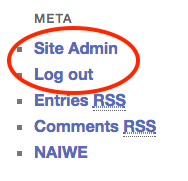One of the most challenging aspects of being a writer or editor is working with somebody who is not very clear on what they want. Although as writers and editors, we generally know about how long it’s going to take us to accomplish a task, some of this also depends on the depth of work involved. Editing has so many different layers, for example, and may be a quick job or may require a total overhaul.
Even writing can be challenging. I recently took on a ghostwriting client for a book and we had to work our way through a zero draft that was ultimately unusable in order for us to be able to get to the second draft. While this wasn’t my fault and was largely due to the fact that the client didn’t understand exactly what they wanted and needed, it provided me with some valuable lessons going forward.
There are several different ways you can tackle challenges associated with a client not knowing what they want. Having a conversation and providing as many examples as possible can help point you in the right direction. I often seek to mentally place clients into various buckets, such as someone who has never done this before and has no experience whatsoever, will require much more hand-holding and project management setup than someone who is working on their fifth or sixth project. It is very important to establish boundaries in these relationships and to introduce as much clarity as possible as the freelancer. An initial conversation is your chance to ask as many questions as possible to get a better understanding of what they want.
Before proceeding, I strongly recommend taking on a trial paid project to do a small portion of the work. For example, a ghostwriting client may have a small paid project such as coming up with the hook for the book and a one-paragraph introduction of what will be covered in the book or a full outline of main topics in the book. Many editors already use the sample edit as a way to showcase their skills, but this is also an opportunity for you to see how much work the project actually needs. Some people require much more substantial editing and assistance, meaning they may need to do a lot more work than they actually need to do.
Meaning that your flat per word or per page project may not be suitable and that you should instead charge hourly. If a client needs a lot of hand-holding, factor this in to your price. You will need more meetings, more emails, and more overall time to think through the most strategic approach to setting things up for this client.
Here are some other tips to keep in mind:
- Have plenty of samples ready for them to review, including before/afters if you have them for editing projects
- Break down your packages/approach in a few ways, such as text in email, over a video call, and in a brochure. This removes the pressure of them asking you questions over and over since you’ve provided it to them in a format they can revisit.
- Use past examples of interactions with clients where you handle something similar to help them refine what they were looking for; this shows you know how to guide someone through
- Be very clear about what services you do and don’t offer; some clients who see you as an expert may try to rope you into other things like formatting or writing otherwise
- Ask them to give you examples of writing/editing they do and don’t like. This not only helps clarify their vision, but can showcase red flags if the client has unrealistic expectations
- Explain to them your feedback/editing process preferences (Leave comments in Google Doc, record a video, etc.) Ideally, make sure they’re on the same page as you when it comes to this before you start working together.
By taking a leadership role early on, you can make this working relationship more effective.


